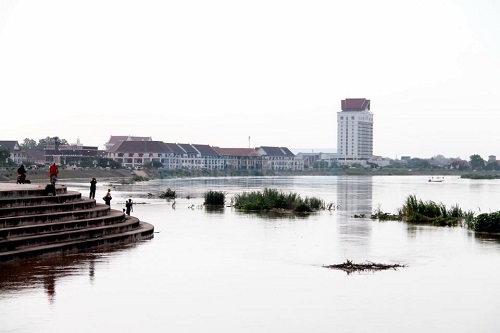Mekong Water Levels Remain At Safe Heights
Source: Vientiane Times
Mekong water levels in central and southern provinces are still lower than warning levels despite heavy rain that struck the region this month.The water level of the Mekong in Vientiane yesterday was about 10.30 m which decreased from 11 m on Monday and was expected to be down to 9.34m today, while warning levels are 11.50 m and 12.50 m according to the Meteorology and Hydrology Department.
Pakxan district, Borikhamxay province was at 12.67 m yesterday and is expected to decrease to 12.32 m today, while warning levels there are between 13.50 m and 14.50 m.
However, the water level of the Mekong is expected to increase from Khammuan to Champassak provinces as water runs into the river from central provinces.
The water level of the Mekong in Thakhaek district, Khammuan province yesterday was 11.25 m and was expected to increase to 11.35 m today, while warning levels are 13 m and 14 m.
Savannakhet province’s water level was about 9.31 m yesterday and could rise to 9.44 m today while the warning levels here are from 12 m and 13 m.
Champassak province was about 8.59 m yesterday and was expected to increase to 8.64 m today, where warning levels are between 11 m and 12 m.
Most of people affected by recent flooding are located in the Northern provinces, especially LuangPrabang because of the high levels witnessed in the Nam Khan, one of Mekong River’s primary branches.
The department has advised pe ople living along rivers and in lowlands to be careful at all times and that those whose condition allowed they suggest stay in temporary safe areas while the water levels are still high.
The department is currently monitoring weather conditions constantly and is also working with the meteorology and hydrology sectors of other countries.
When the Mekong’s level increases to high or when other extreme weather conditions are forecasted, the department will immediately send out warnings through various domestic and foreign meteorology and hydrology sectors or via social media like Facebook, websites, radio, newspapers and television.

